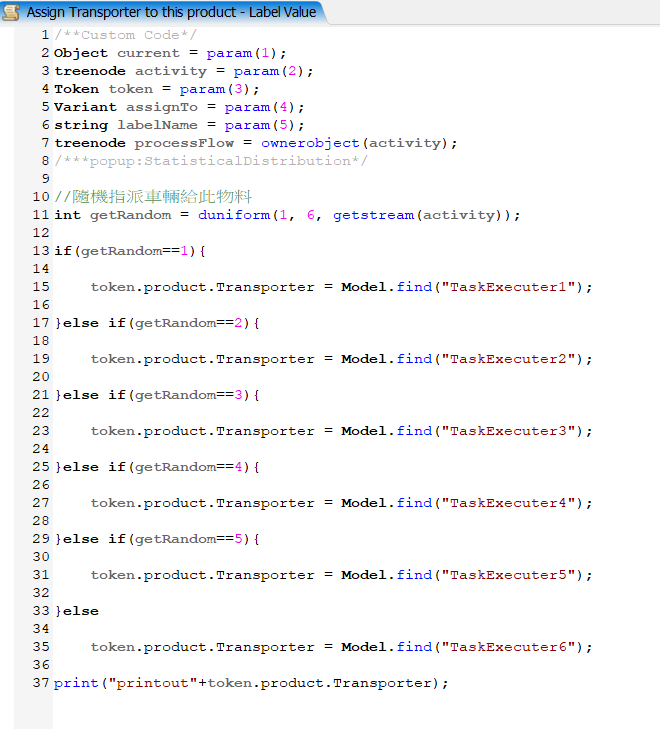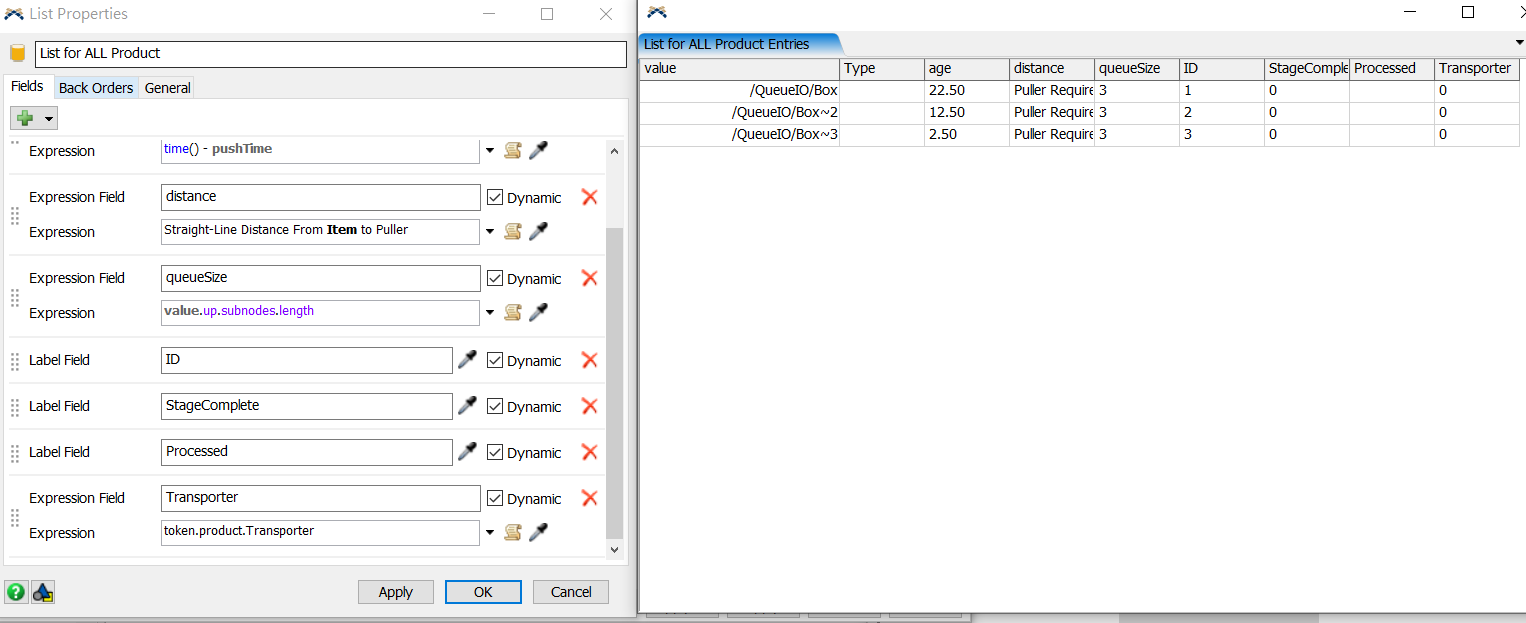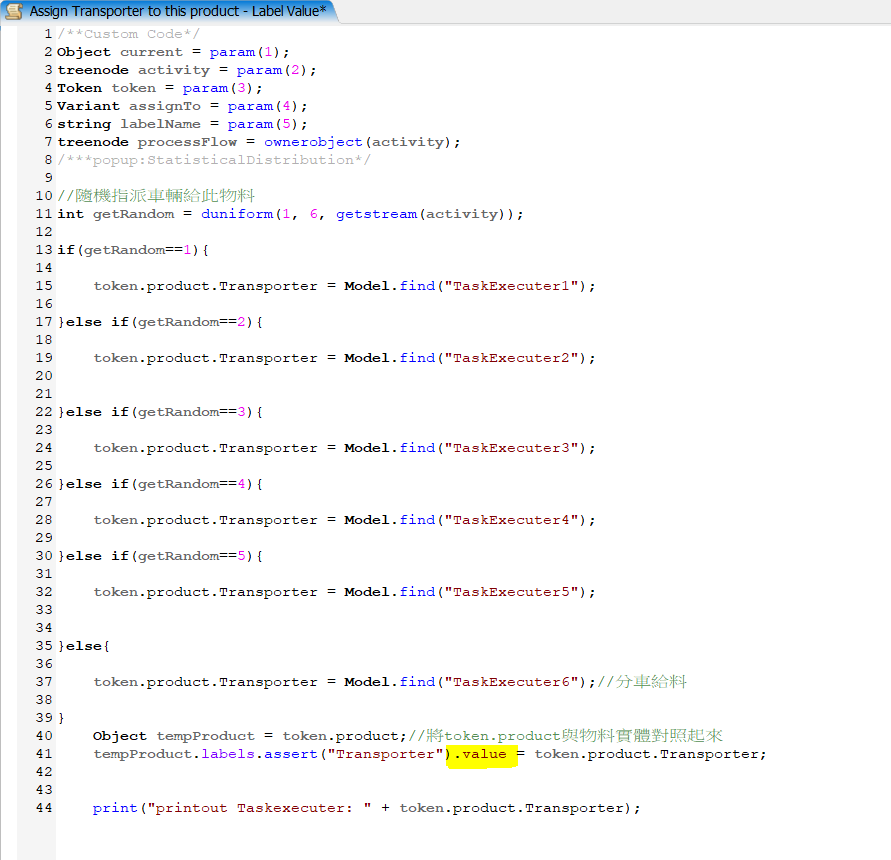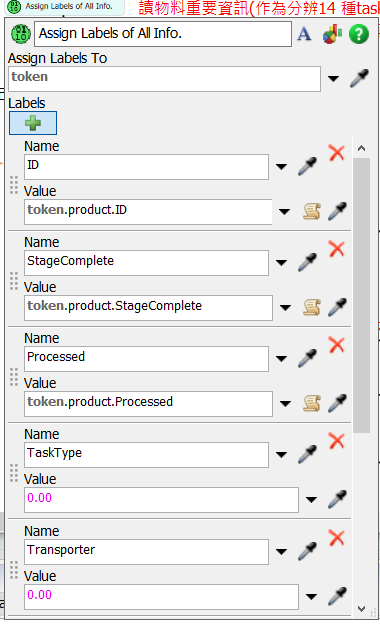I'm currently writing a process flow that is from product's point of view. What I'm doing in my flow is to create a task, then the flow will next find an AGV for each task. A product is "token.product".
Firstly, I'm a kind of confused how to connect an item in 3D model to a process flow token. I use On event trigger and use "match" to get the reference from the item in 3D model. But I'm not really sure the difference of using"assign" and "match". Is "assign" only update value whenever status changes from 3D model ? And using "match" could both update any status changes from 3D model and process flow?
Secondly is about getting value. Now,I'd like to use process flow randomly find one AGV for a product, may I do it like below? There are 6 AGVs in my model. I use duniform to get a number, each number correspond to a TaskExecuter. After this, I also want to write the AGV that each product gets( "token.product.transport") to a list field(which is "List for ALL Product" in model), but it seems "token.product.transport" cannot be read, result always get 0.


This is where the custom code mentioned above. Thank you!








 Then you can use "item.Token.<insertLabelName>" to set the token labels on 3D object triggers.
Then you can use "item.Token.<insertLabelName>" to set the token labels on 3D object triggers.